Necromancy is a term that often evokes images of dark, sinister rituals and communication with the dead. In the core, Necromancy is the practice to communicate with the deceased. This practice is steeped in history, with roots that go back to old civilizations.
Historically, Necromancy was a serious and often respected practice that was seen as a form of magic or sorcery that spanned over many cultures, including the Greeks, Romans and Egyptians. These old practitioners believed that the dead could give insight into the future or guidance on urgent issues. The methods used for necromantic rituals varied greatly in different cultures and periods.
One of the best known forms of necromancy includes ritual ceremonies designed to evoke the spirits of the dead. These rituals can include the use of incantations, prayers, magical circles and specific offers or sacrifices to attract and force spirits to appear and communicate. In some traditions, sacrifices, whether it was symbolic or actually, was needed to evoke a spirit. Although rare, this can mean the range of animals and, in dark interpretations of necromancy, even human sacrifices.
Necromancers was often said that they use the use of human bones, ashes or other remains as a medium to contact the dead. The conviction was that these remains were in connection with the spirit of the deceased, making the communication facilitated.
In modern times, the traditional practice of Necromancy, as is known in old or medieval contexts, is rare. However, the fundamental desire to communicate with the dead remains in various forms. Modern spiritism can be seen, for example, as a continuation of necromantic practices. Mediumship, Seans and the use of technology to communicate with spirits all reflect the permanent human curiosity to the hereafter.
Paranormal research also shares similarities with Necromancy. Although these activities usually do not include ritual elements or the explicit intention to evoke spirits for fortune telling or guidance, they represent a contemporary form of dealing with the spirit world.
Practice to call for spirits on a ghost hunt and ask them to make and communicate their presence and communicating agreements with the magic rituals of traditional necromancy. This approach often means that they speak directly with spirits, ask questions and invite them to respond via physical signs such as punches, movements of objects or temperature changes. Researchers can also use specific sentences, protective prayers or symbols.
Some researchers use technology to try to detect, record and communicate with spirits. Although this modern approach to interaction with the spirit world differs from traditional necromancy, the underlying intention retains to make contact with the hereafter the relationship between ghost hunt and necromancy.
Although Necromancy has ties with contemporary ghost hunting, the practice of traditional necromancy as it was known in ancient times is less common and is often considered part of the empire of folklore, mythology or certain esoteric traditions.
If someone is interested in exploring practices related to communicating with the spirit world, there are different paths that they could consider, including spiritism and mediumship. These practices include communicating with the spirits of the deceased. Many spiritualist communities and churches offer development circles or classes that are designed to help individuals develop their mediumistic skills. Some contemporary witchcraft traditions and pagan paths also include practices that relate to honor or communication with ancestors and spirits.
The reputation of Necromancy is loaded with controversy, fear and legal implications throughout history. In the UK and elsewhere, practices related to necromancy and other forms of magic or sorcery are often with suspicion, conviction and sometimes legal action. This negative perception stems from various factors, including religious beliefs, superstition and the fear of the unknown.
In medieval Europe, the Christian church played an important role in shaping the attitude towards necromancy and similar practices. Necromancy was often equated with witchcraft and heresy, seen as a pact with the devil. This led to the conviction and determination of laws aimed at suppressing such practices.
Nowadays, laws that are specifically aimed at necromancy as a practice are hardly existing. The reputation of necromancy, however, remains mixed, with attitudes ranging from fascination and interest in historical and cultural contexts to continuous skepticism and Wariness, especially among those with strong religious beliefs.
Necromancy naturally requires an existing belief system to accept that the dead can indeed communicate with the living, in particular a belief in the hereafter. Skeptics claim that without tangible proof of life after death and a spiritual empire, necromancy falls into the empire of pseudoscience or fantasy.






